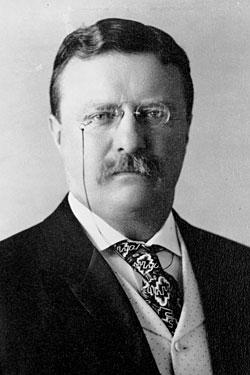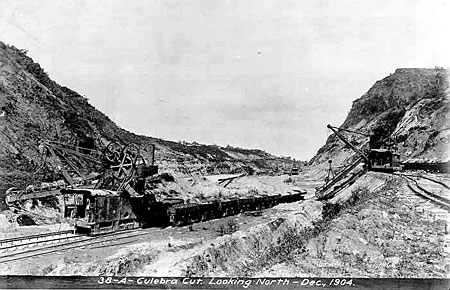Panama Canal and Theodore Roosevelt
William McKinley won a second term in 1900, but Vice President Theodore Roosevelt completed the term after McKinley was assassinated. Roosevelt continued to strengthen the foreign policy surge, which McKinley started. Under Roosevelt, the United States aligned itself with countries that could economically or strategically support U.S. interests.

As President, Theodore Roosevelt, or “Teddy”, is considered a Progressive for his many reforms. For example, he broke up large monopolies that had unfairly controlled the oil and railroad industries. These monopolies had set the prices for goods and services at a rate so high that consumers and smaller businesses suffered while the big business owners grew rich. This earned Roosevelt the nickname of a “trust buster”. His infamous quote “speak softly and carry a big stick” referred to his leadership qualities of diplomacy backed by military might. Teddy also won numerous awards for his achievements in conservation when he placed lands in a federal reserve to protect them, created national forests and helped push through funding for irrigation projects.

The Spanish-American war opened up economic opportunities in the Pacific, but the United States needed a shorter route from the Atlantic to the Pacific. The Isthmus of Panama in Columbia was a narrow strip of land and seemed perfect to build a channel between the two oceans. A French company had already purchased a 25-year concession from Columbia, to use the land for building such a canal, in 1879.
Unfortunately, the jungle-like conditions were home to scores of mosquitoes, and many of the French laborers building the canal died from yellow fever. The French Company also ran into engineering troubles. Since Panama is not at sea level, a canal required locks to flood the area underneath a vessel, essentially pushing it forward through the canal. The French company gave up in 1889 before completion and was willing to sell the concession to the United States with Columbian approval. Columbia, however, was willing to wait until the concession expired, and then offered the Isthmus of Panama for a higher price.
 |
With support from President Roosevelt and the United States Navy, the French company organized a Panamanian revolt against Columbia. Panama defeated Columbia and with the signing of the Hay-Bunau-Varilla Treaty in 1904, the United States was granted indefinite use of the land to complete the canal. With the medical research of Dr. Walter Reed, the United States was able to control the spread of yellow fever, enabling workers to complete the canal in 1914. It would later be returned to Panamanian control in 1977.